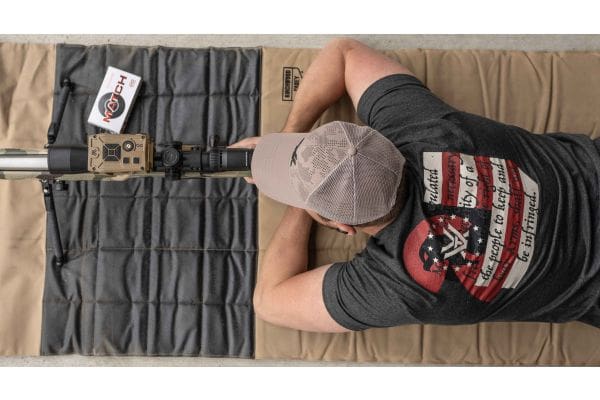The .30-30 Winchester and the .30-06 Springfield are two of the most popular rifle cartridges of all time, especially among hunters, and both are still alive and kicking after more than a century.
The latter was created for the battlefield and was adopted by hunters for its many attributes. The former was built and marketed as a game getter for the woods just as hunters and the rest of the world were getting used to smokeless powder.
After all these decades, both of these cartridges are still beloved by folks who love classic and reliable firearms. Put simply, the .30-30 Winchester is a solid choice for big game hunting at close ranges, like the whitetail woods of the Midwest, while the .30-06 is the more versatile big game hunting cartridge with more long-range potential. But let’s dig into the details of the .30-30 vs .30-06.
.30-30 vs .30-06 Specs
.30-30 Winchester
- Introduced: 1895
- Designer: Winchester
- Case Type: Rimmed, bottleneck
- Parent Case: .38-55 Winchester
- Bullet Diameter: 7.8mm / 0.308 inches
- Neck Diameter: 8.4mm / 0.330 inches
- Shoulder Diameter: 10.2mm / 0.401 inches
- Base Diameter: 10.7mm / 0.422 inches
- Rim Diameter: 12.9mm / 0.506 inches
- Case Length: 51.8mm / 2.039 inches
- Overall Length: 64.8mm / 2.550 inches
- Max Pressure (SAAMI): 42,000 psi
- Bullet Mass: 7 grams (110 grain) – 11 grams (170 grain)
- Velocity: 2,230 fps – 2,680 fps
.30-06 Springfield
- Introduced: 1906
- Designer: Springfield Armory
- Case Type: Rimless, straight walled, bottleneck
- Parent Case: .30-03 Springfield
- Bullet Diameter: 7.82mm / 0.308 inches
- Neck Diameter: 8.6mm / 0.340 inches
- Shoulder Diameter: 11.2mm / 0.441 inches
- Base Diameter: 12mm / 0.471 inches
- Rim Diameter: 12mm / 0.473 inches
- Case Length: 63.3mm / 2.494 inches
- Overall Length: 85mm / 3.34 inches
- Max Pressure (SAAMI): 60,000 psi
- Bullet Mass: 10 grams (150 grain) – 14 grams (220 grain)
- Velocity: 2,500 fps – 2,900 fps
.30-30 Winchester History
The .30-30 has that severe bottleneck, a big ol’ rim at the bottom of an every-so-slightly tapered case, and — usually — a round-nosed bullet at the top. There’s no mistaking the distinct silhouette of a .30-30 cartridge.
Officially, this cartridge’s full name is “.30 Winchester Center Fire,” or “.30 WCF.” You might also see it marked “7.8x51mmR” if you happen to be in Eastern Europe. But to most, it’s simply the old, reliable “thirty-thirty.”
The .30 Winchester Smokeless first showed up in Winchester’s catalog No. 55 in August 1895 — but when chambered in the Model 1894, it was known as the .30 WCF. In the spirit of rivalry, the other big lever gun company in the U.S. at the time, Marlin, chambered its Model 1893 rifle for the cartridge, but that company called it “.30-30” or “.30-30 Smokeless” using an old naming convention for black powder rifle cartridges with the additional “-30,” meaning it had a standard load of 30 grains of smokeless powder.
The Union Metallic Cartridge Company didn’t want rival Winchester’s name on its ammo boxes either, so they stuck with Marlin’s designation, and it kind of stuck from there. Eventually, the two names merged to become “.30-30 Winchester.”
Unlike many popular cartridges of its day, it wasn’t introduced for the battlefield but the sporting field. The .30-30 was first marketed in conjunction with the recently introduced Winchester Model 1894 lever-action rifle a year after John Moses Browning’s legendary lever gun debuted. It went on to become one of the most popular cartridges of the following century.
Photo by Tyler Freel
In 1895, the .30-30 and the .25-35 Winchester became the country’s first dedicated small-bore sporting cartridges introduced after the ammo world had shifted to smokeless powder. They put long-range power (relative to the time) in the hands of average hunters.
To understand the .30-30’s popularity, you have to look at the round’s specs in context.
The .30-30 debuted with a velocity of 1,970 fps, which made it a great performer inside 150 yards. That’s spitting distance for most rifle hunters today, but at the time, riflescope technology was not only primitive, but quite rare. The pinnacle of hunting rifle tech for the masses was a lever gun with good iron sights, perhaps a rear ladder sight.
Even if scopes had been more common, much of the nation’s hunting grounds were on Eastern terrain where that 150-yard effective range was ideal.
While optics advanced throughout the 20th century, good glass remained expensive (too expensive for many hunters) for more than 100 years after boxes of .30-30 were first stuffed into the pockets of hunting jackets. So, the round remained popular and affordable, just like the guns that used it.
The cartridge went on to be so popular in lever guns like the Marlin 336 and Model 1894 that it practically became synonymous with the lever-gun platform. When the Marlin 336 hit the stage, it was chambered in .30-30. Early Savage Model 99 rifles came in .30-30, and you can find plenty of .30-30s in most lever gun company catalogs today nearly 130 years later.
That said, as the 20th century gave way to the 21st and the most affordable bolt-action rifles were able to outperform even the best .30-30 lever guns, the round’s popularity waned among hunters who opted for a more versatile bolt gun topped with an affordable variable-power scope.
Sure, today the .30-30 can be loaded hotter and topped with more efficient bullets like Hornady’s Leverevolution or Federal’s Hammer Down, and these advancements have pushed the cartridge farther than anyone using it in the deer woods of 1925 could have ever imagined. But still, there’s now a whole universe of newer, more powerful, and more efficient deer rifle cartridges, and the .30-30’s large rim means it doesn’t exactly stack well in a magazine.
.30-06 Springfield History
The .30-06 Springfield was developed as a cartridge for use by the U.S. military in 1906. It replaced the older .30-03 Springfield, 6mm Lee Navy, and the .30-40 Krag. All three were in service at the time and they were all considered underpowered.
While the military readily adopted early smokeless cartridge options as the 19th century came to a close, ammo and rifle tech was moving fast, and at the dawn of the Age of the Bolt Actions, something better with longer effective range and more power was needed.
The .30-06 Springfield became the U.S. Army’s primary rifle and machine gun cartridge and remained so for five decades.
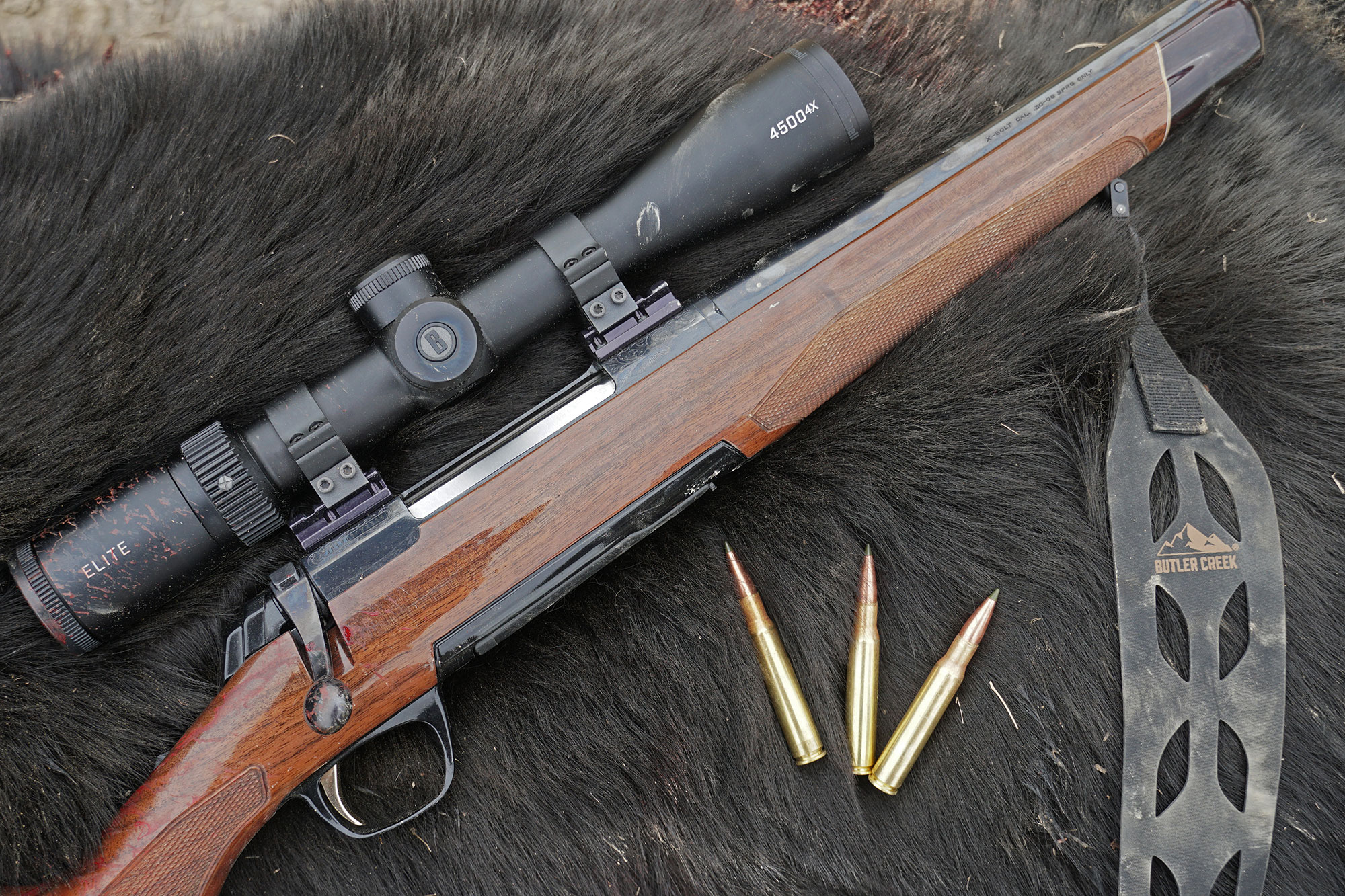
It was first chambered in the famed bolt-action M1903 Springfield rifle, the M1917 Enfield bolt gun, and the semi-auto M1 Garand rifle. It was also used in the Browning Automatic Rifle (BAR) the M1941 Johnson rifle and several machine guns, most notably the water-cooled M1917 Browning and the air-cooled M1919 Browning machine gun platforms.
The U.S. military used these firearms and their .30-06 ammo in WWI, WWII, the Korean War, and the Vietnam War.
The .30-06 Springfield cartridge also has a couple of other names. In metric, it’s 7.62x63mm, and Winchester called it the .30 Gov’t ‘06. You’ll notice it also uses the old black powder naming convention, but the “-06” doesn’t refer to the number of grains in the casing — it refers to 1906, the year the cartridge was introduced. The “.30” is, of course, the caliber of the bullet. Regardless, the right way to say it is “thirty-aught-six.” Don’t ask why, that’s just the way it is.
The military began phasing out use of the .30-06 with the introduction of the select-fire M14 rifle and M60 machine gun, which were both chambered in 7.62x51mm (.308 Win) in the late 1950s. The .308 Winchester used the .30-06 as a parent case and was eventually loaded to roughly equal the ballistic performance of the .30-06 Springfield in a short-action rifle with less recoil.
The M14 was soon replaced by the M16 platform in 5.56mm (.223 Win) in the 1960s as the military moved toward a smaller-caliber, higher-velocity mindset for general service rifles.
While the round has decidedly military origins, the .30-06 caught on in the sporting world in a huge way. It became the round used by rifle hunters going after big game. Since it was designed to cycle well in belt-fed machine guns and semi-auto rifles, that meant it worked very well in bolt action rifle magazines, too.
And as factory bolt guns, like the Remington 700, were made for the hunting masses, the .30-06 got more popular.
.30-30 vs .30-06 Ballistics
The .30-30 is milder cartridge and better at close distances, while the .30-06 is more effective at longer ranges but also recoils harder. Here’s a closer look at the ballistics of each.
.30-30 Ballistics
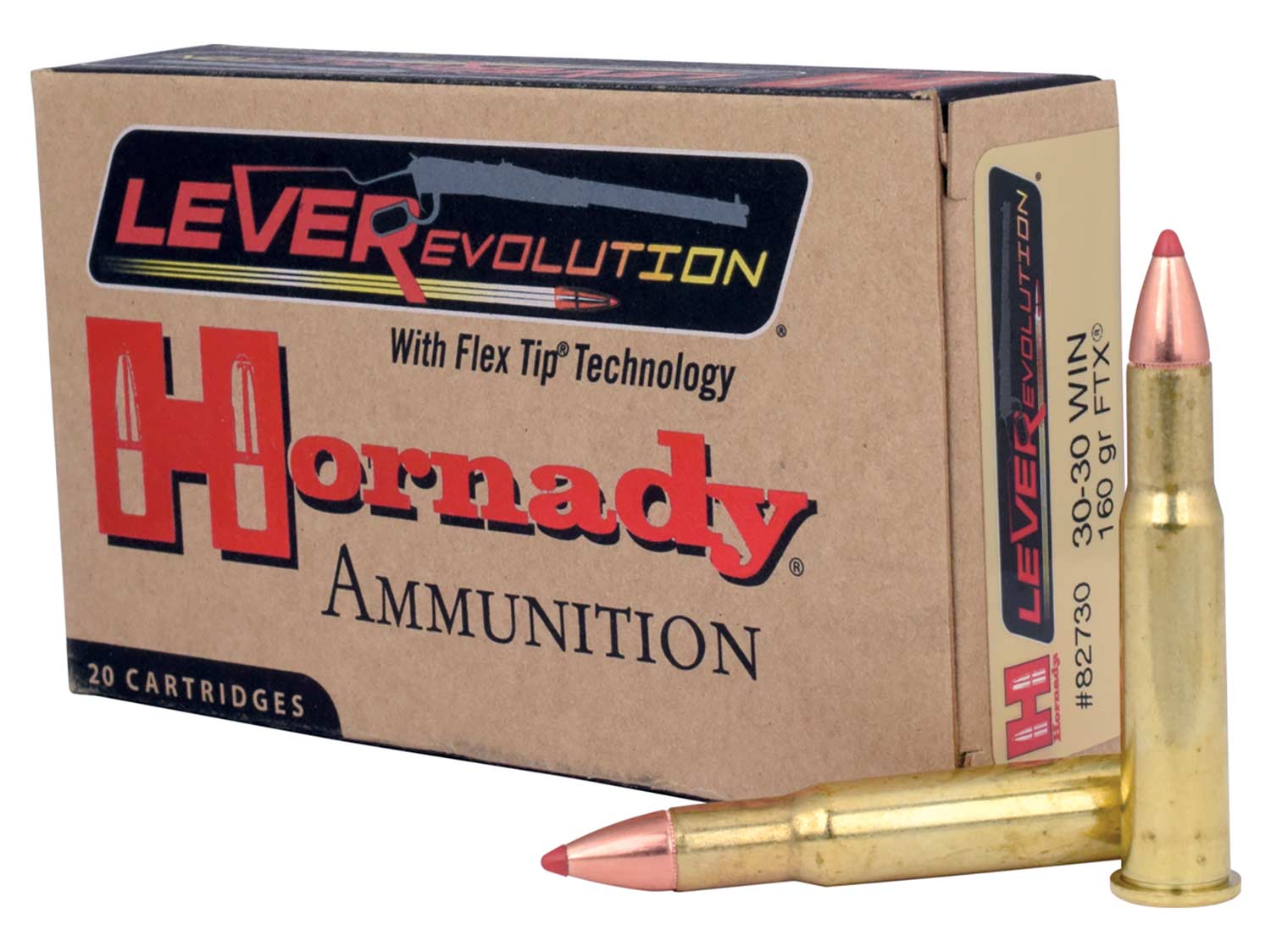
At the time it hit the gun market, the .30-30 pushed a 160- or 165-grain bullet at 1,900 to 2,000 fps with a 4-inch drop at 200 yards. That was considered flat shooting. The most common loads eventually settled on 150-grains or 170-grain bullets. The lighter load could move at 2,390 fps from a 24-inch barrel. Not too shabby.
When it comes to recoil, that 150-grain load feels a bit lighter than a 20-gauge shotgun, but it kicks harder than a .410. Compared to a .30-06, a .30-30 produces just a little bunny kick — about half the felt recoil.
As you can imagine, a cartridge that has been around since the mid 1890s has been pushed to its extremes in both directions. Today you can find loads and bullets from 130 grains to 190 grains. Custom loads have used even heavier bullets with modern propellants.
Thanks to its large rim, the .30-30 even got popular in handguns built for metallic silhouette shooting. Here’s a look at a basic .30-30 load today.
Ammunition Example: .30-30 Winchester Super-X 150-grain Power-Point
Muzzle Velocity: 2,390 fps
Muzzle Energy: About 1,900 ft-lbs
| Range (yards) | Velocity (fps) | Energy (ft-lbs) | Drop (inches) |
| 0 | 2,390 | 1,900 | 0 |
| 100 | 2,199 | 1,530 | -1.4 |
| 200 | 2,019 | 1,207 | -5.4 |
| 300 | 1,852 | 927 | -12.1 |
| 400 | 1,694 | 694 | -22.2 |
| 500 | 1,546 | 496 | -36.0 |
| 600 | 1,409 | 336 | -53.8 |
| 700 | 1,282 | 208 | -76.8 |
| 800 | 1,165 | 112 | -105.0 |
| 900 | 1,057 | 48 | -138.8 |
| 1000 | 957 | 7 | -178.8 |
Allowing ballistic-tips to be used in the .30-30 was a pretty serious game changer. Hornady’s LEVERevolution ammo line uses polymer tipped bullets that are safe when set against the primer of another cartridge under tension in a lever gun’s tubular magazine.
When it comes to performance, the 150-grain bullets in the chart above drop a hefty 12.1 inches at 300 yards going 1,852 fps. A round topped with a 160-grain FTX LEVERevolution bullet is only going 100 fps slower at 300, but it only drops 6.5 inches. It flies another 100 yards before you see a 12-inch drop.
Ammunition Example: .30-30 Hornady 160-grain FTX LEVERevolution
Muzzle Velocity: 2,400 fps
Muzzle Energy: About 2,000 ft-lbs
| Range (yards) | Velocity (fps) | Energy (ft-lbs) | Drop (inches) |
| 0 | 2,400 | 2,000 | 0 |
| 100 | 2,275 | 1,740 | -1.0 |
| 200 | 2,155 | 1,530 | -2.9 |
| 300 | 2,037 | 1,357 | -6.5 |
| 400 | 1,923 | 1,215 | -12.4 |
| 500 | 1,814 | 1,102 | -21.2 |
| 600 | 1,711 | 1,011 | -33.7 |
| 700 | 1,615 | 940 | -50.4 |
| 800 | 1,527 | 887 | -71.9 |
| 900 | 1,446 | 847 | -98.4 |
| 1000 | 1,373 | 818 | -130.5 |
.30-06 Ballistics
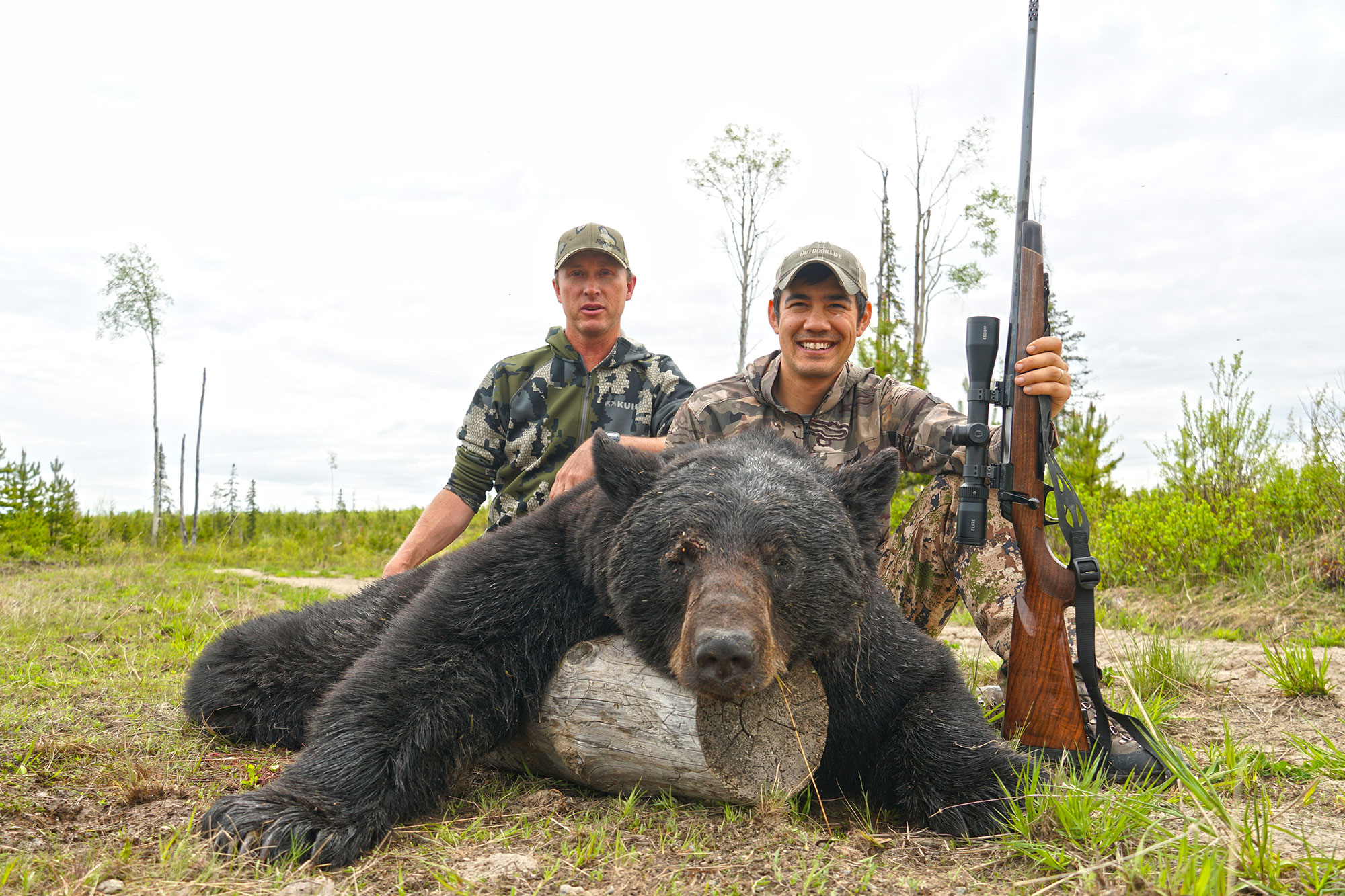
The reason the .30-06 caught on with hunters after being introduced as a military cartridge was because it had a flatter trajectory and carried more energy than the .30-30. Plus, it was more versatile and could be loaded with then state-of-the-art spitzer bullets ranging from 110 to 220 grains, giving it the power and versatility necessary to take down North America’s biggest game, and also mid-sized game, without unnecessarily destroying meat.
It’s all-around performance was lauded by popular gun writers of the first half of the 1900s, like longtime Outdoor Life shooting editor Jack O’Connor. Teddy Roosevelt even packed a .30-06 in the massive crate of firearms that accompanied him on his famous African safari with his son, Kermit, from 1909 to 1911.
Topped with a 150-grain bullet, the .30-06 is ideal for medium-sized game with a muzzle velocity of about 2,900 fps and it doesn’t start to drop significantly for 300 yards.
Heavier bullets in the 165-168-grain range offer a higher ballistic coefficient to cut through crosswinds and carry more energy downrange, but they also produce a bit more of a curved trajectory. Even heavier loads from 180 grains to 220 grains are favorites among hunters for taking elk, moose, and brown bears.
In terms of basic recoil estimates, the .30-06 produces 25 ft-lbs of felt recoil in a seven-pound rifle (compared to 14 ft-lbs with a .30-30). Here’s look at the ballistics of some popular modern .30-06 loads.
Example Ammunition: .30-06 Federal Premium 180-grain Nosler AccuBond
Muzzle Velocity: 2,900 fps
Muzzle Energy: About 3,500 ft-lbs
| Range (yards) | Velocity (fps) | Energy (ft-lbs) | Drop (inches) |
| 0 | 2,900 | 3,500 | 0 |
| 100 | 2,732 | 2,800 | -1.0 |
| 200 | 2,573 | 2,147 | -3.7 |
| 300 | 2,422 | 1,600 | -8.1 |
| 400 | 2,279 | 1,110 | -15.1 |
| 500 | 2,142 | 770 | -25.8 |
| 600 | 2,012 | 565 | -41.2 |
| 700 | 1,889 | 403 | -61.4 |
| 800 | 1,772 | 278 | -87.4 |
| 900 | 1,661 | 186 | -120.3 |
| 1000 | 1,556 | 120 | -161.0 |
Ammunition Example: .30-06 Federal Premium 220-grain Nosler Partition
Muzzle Velocity: 2,600 fps
Muzzle Energy: About 3,400 ft-lbs
| Range (yards) | Velocity (fps) | Energy (ft-lbs) | Drop (inches) |
| 0 | 2,600 | 3,400 | 0 |
| 100 | 2,420 | 2,650 | -1.8 |
| 200 | 2,252 | 1,950 | -7.0 |
| 300 | 2,095 | 1,400 | -16.2 |
| 400 | 1,947 | 985 | -30.8 |
| 500 | 1,810 | 694 | -50.4 |
| 600 | 1,681 | 474 | -75.0 |
| 700 | 1,559 | 319 | -104.5 |
| 800 | 1,443 | 226 | -140.0 |
| 900 | 1,332 | 165 | -181.5 |
| 1000 | 1,225 | 123 | -229.0 |
The Legacy of Two Classic .30 Calibers
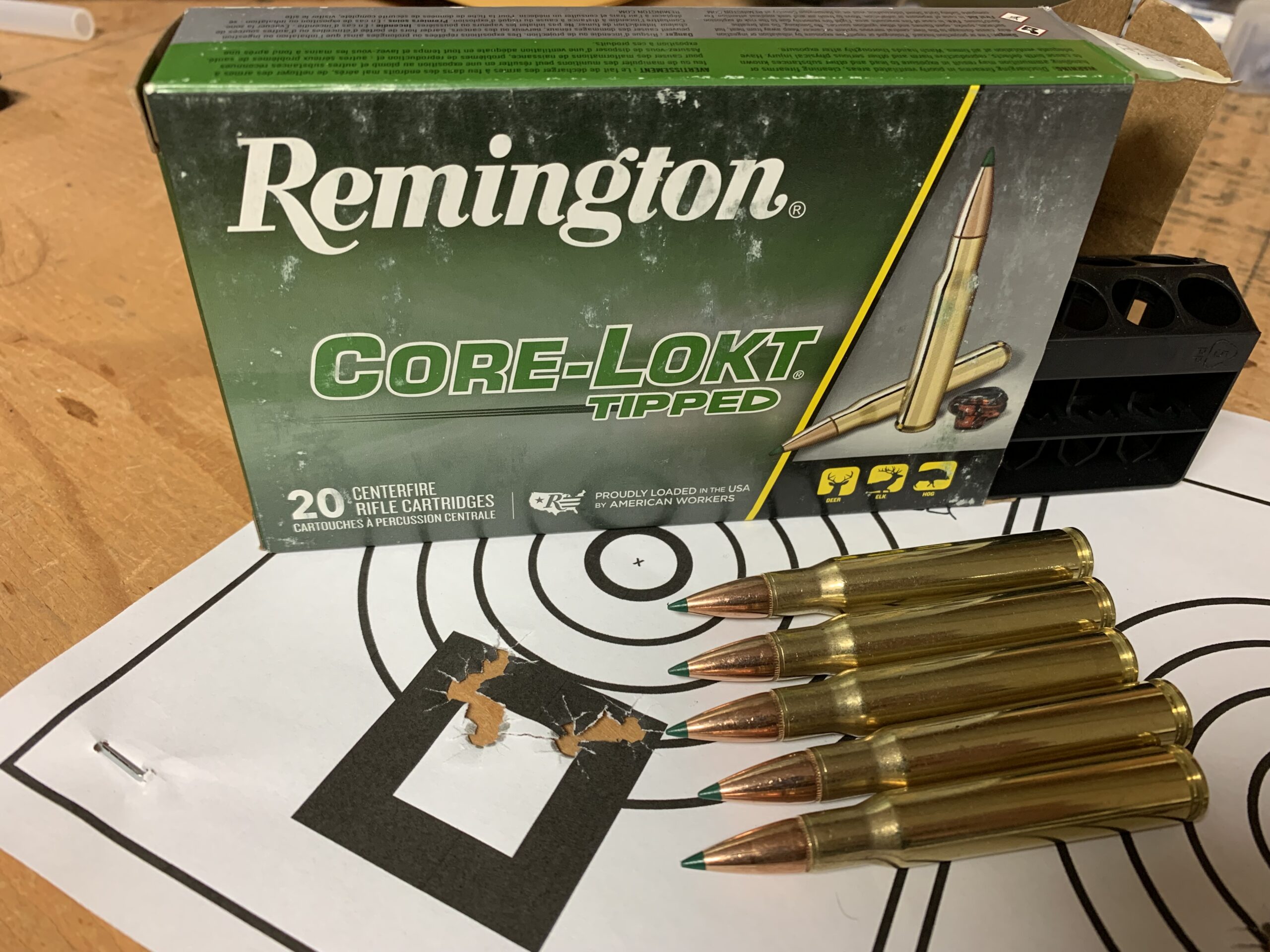
What are the .30-30 and .30-06 up to today? The .30-30 is still doing what it’s always done best: getting loaded into lever guns and taking whitetails. Plenty of hunters still rely on it, especially if they hunt in places where shots on game are typically within 150 yards.
For others, a connection to a hunting rifle that has been putting food on the table for generations is something worth keeping, and having a ready supply and range of .30-30 ammo available is absolutely wonderful. Plus, the capabilities introduced by Hornady LEVERevolution ammunition have extended the overall life and usefulness of this venerable cartridge.
As lever guns enjoy a resurgence in popularity, the .30-30 is giving birth to the next generation of lever gun ammo. In 2023, Remington came out with a new straight-wall cartridge built for medium sized game using the .30-30 Winchester as a parent case: the .360 Buckhammer.
This new cartridge was created by blowing out the shoulder of a .30-30 case and necking it up to accommodate a .358-caliber bullet. The resulting .360 Buckhammer generates more pressure, about 8,000 psi, than the .30-30, and delivers remarkable performance in carbine-length lever guns.
As for the .30-06, there are flatter shooting, more efficient options that are just as versatile. For a lot of modern shooters, the felt recoil generated by a .30-06 just isn’t worth it. Then on the other end of the power scale there’s the .300 Win Mag, which offers a better balance of power and range.
The .308 Winchester was introduced as an improved version of the .30-06, and many view it as just that (read our full breakdown of the .308 vs .30-06 here). And, of course, there’s the accurate, versatile, and popular 6.5 Creedmoor.
But the truth is, most game in the U.S. is killed inside 300 yards, and the old battlefield-tested .30-06 is as effective as ever in terms of accuracy and power inside that range. While there may be better alternatives out there for specific use cases, the .30-06 is still a great all-around big game round — maybe just not the best one.
Read the full article here



